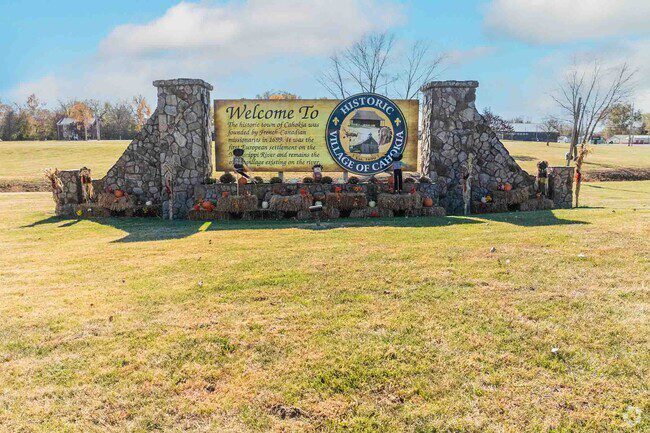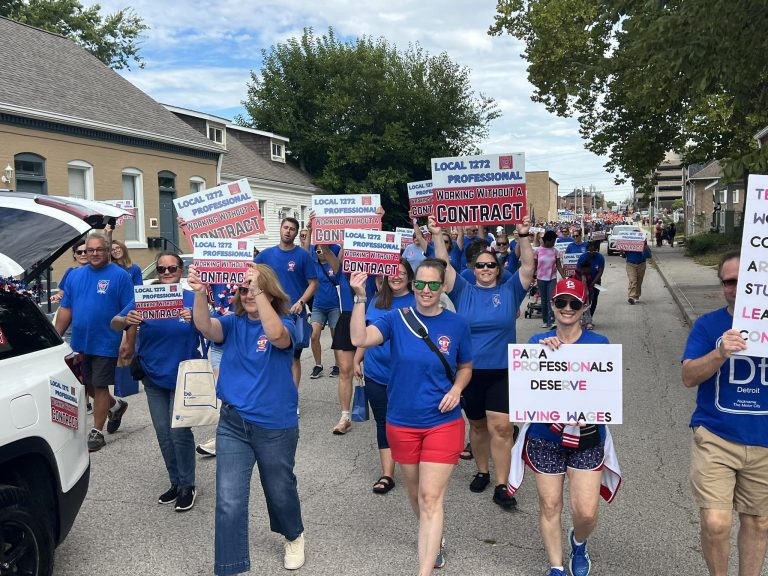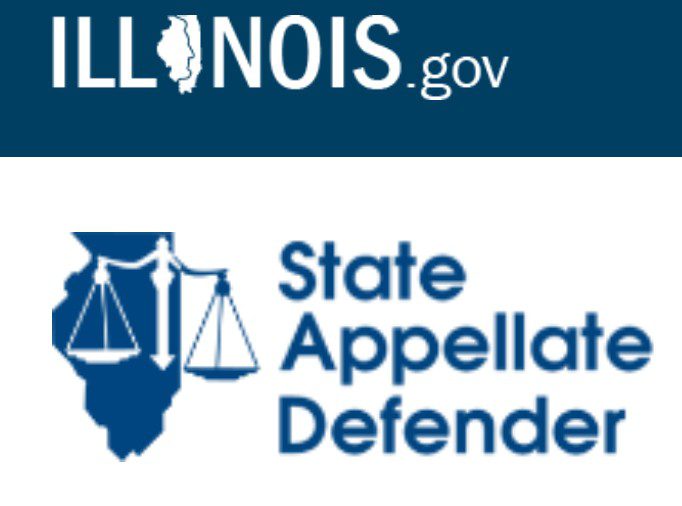Cahokia Heights, Illinois
St. Clair County
News
The Department of Justice and the U.S. Environmental Protection Agency (EPA) have reached a settlement with the City of Cahokia Heights, Illinois, to address violations of the Clean Water Act resulting from the city’s operation of its sanitary sewer system. For detailed information, please refer to the official press release.
The settlement includes a proposed consent decree, which is available on the Justice Department’s website. A 60-day public comment period is in place, and instructions for submitting comments can be found in the related Federal Register notice, also posted on the Justice Department’s Proposed Consent Decree page.
Background
Cahokia Heights, home to 17,894 residents, was established in May 2021 through the merger of Cahokia, Alorton, and Centreville. The city faces significant flooding and sewage backups during heavy rains and even dry-weather sanitary sewer overflows. These challenges stem from aging infrastructure, limited maintenance, and Cahokia Heights’ location in a low-lying watershed prone to flooding.
The local sewer systems, built in the 1980s, are outdated, undersized, and poorly maintained. Many lift stations require urgent renovations, and the city lacks sufficient capacity to handle wastewater during storm events. These issues contribute to sewer backups and ongoing public health concerns.
State and Federal Regulations
Under the Clean Water Act (CWA), the National Pollutant Discharge Elimination System (NPDES) regulates wastewater discharges. Illinois EPA oversees NPDES permits and inspections for compliance. However, collection-only systems like those in Cahokia Heights are not subject to NPDES permitting.
Technical and financial assistance is available from federal and state programs to support municipal wastewater systems. Local municipalities remain responsible for developing and maintaining these systems, typically funded through user fees.
Enforcement
Illinois EPA has conducted regular inspections, responded to complaints, and collaborated with community stakeholders to address Cahokia Heights’ sewer issues. Enforcement actions include a referral to the Illinois Attorney General’s Office for violations of state environmental laws. The EPA continues to work with state and federal agencies to provide support and coordinate improvements to the city’s wastewater system and reduce the impact of stormwater runoff.
Together, these efforts aim to rebuild Cahokia Heights’ infrastructure and ensure compliance with state and federal environmental laws.
Illinois EPA Financial Assistance Projects Benefitting Cahokia Heights
Illinois EPA has issued two grants that will have a positive impact on the City of Cahokia Heights. The projects will assist with wastewater infrastructure restoration and rehabilitation and with watershed planning to identify best management practices to reduce stormwater impacts within the watershed.
Wastewater Collection and Transport Infrastructure Rehabilitation and Restoration Project
Grant Recipient – City of Cahokia Heights
WWCTIRR-Amended Grant Agreement (February 22, 2023)
Grant Period – July 25, 2022 – October 15, 2025
Grantee Award – $9,980,750.67
Grantee Match – $0
Grant Total – $9,980,750.67
Grantee Project Webpage

The Wastewater Collection and Transport Infrastructure Rehabilitation and Restoration Project (Project) will fund three discreet components to improve the quality of life, within the municipality of Cahokia Heights.
PROJECT COMPONENTS
Outreach activities to inform the community of the progress toward implementation of the project;
Rehabilitation and restoration construction activities for the wastewater collection and transport infrastructure system; and
Purchase of necessary equipment for current and future operation and maintenance of the wastewater collection and transport system within the project area.
PROJECT REQUIREMENTS
Support the elimination of Sanitary Sewer Overflows (SSO),
Reduce or eliminate system surcharging,
Eliminate wastewater service backups,
Reduce operation and maintenance costs, and
Increase reliability and continuity of wastewater service.
PROJECT OUTPUTS
Implementation of the Construction Activities Strategy
- Rehabilitation and/or restoration of approximately 35 lift stations
- Rehabilitation and/or restoration of approximately 5,800 linear feet of impaired sewer line
- Repair of approximately 1,500 linear feet of pipe repair
- Construction of approximately 5,800 linear feet of Cured in Place Pipe Liner
- Slip lining of approximately 3,500 linear feet of the City’s main trunk line
Implementation of the Outreach Program Strategy
- Webpage
- Meetings
PROJECT OUTCOMES
Improved collection and transport of existing and future wastewater flows within the City of Cahokia Heights during both dry and wet weather conditions
Compliance with regulatory requirements for reserve capacity and prevention of prohibited SOSs, and
Improved customer wastewater service, including the reduction of frequency and duration of system surcharge events that cause basement or service backups
Public Meetings
City of Cahokia Heights Townhall #5
September 26, 2024 6:00pm
City of Cahokia Heights Townhall #4
June 27, 2024 6:00pm
Agenda
City of Cahokia Heights Townhall #3
March 27, 2024 6:00pm
Agenda
City of Cahokia Heights Townhall #2
September 27, 2023 6:00pm
Agenda
City of Cahokia Heights Townhall
July 13, 2023 6:00pm
Agenda
Contact: Community Outreach Team
618-332-4207
communityoutreach@cahokiaillinois.org
Grant Documents
Draft Construction Activities Strategy (CAS)
CAS comments-Illinois EPA transmittal letter (01-26-2023)
Final Approved Construction Activities Strategy (CAS)
CAS Approval letter (03-09-2023)
Draft Operation & Maintenance Plan (O&M)
O&M comments-Illinois EPA transmittal letter (03-09-2023)
O&M (v2) comments-Illinois EPA transmittal letter (04-17-2023)
Illinois EPA approval letter of O&M Plan (04-18-2023)
Draft Outreach Program Strategy
Final Approved Outreach Program Strategy (OPS)
Illinois EPA approval letter of OPS (03-16-2023)
Prairie du Pont/Judy’s Branch Watershed-Based Plan Development and Pilot Demonstrative Best Management Practices Implementation
Grant Recipient – Heartlands Conservancy
Grant Period – March 19, 2020- March 31, 2023
Grantee Award – $919,868.74
Grantee Match – $99,522.47
Grant Total – $1,019,391.21
Grantee Project Webpage

The Prairie du Pont/Judy’s Branch Watershed-Based Plan Development and Pilot demonstrative Best Management Practices Implementation Project (Project) will develop a watershed-based plan (Plan) for the approximate 95,000-acre project area which includes the Prairie du Pont watershed and the St. Clair County portion of the Judy’s Branch watershed. The Plan will be designed to improve water quality by controlling nonpoint source pollution. The Plan will be consistent with the 2013 US EPA watershed-based plan guidance and current watershed planning principles. The development of the Plan includes a significant outreach and information program which includes implementation of pilot demonstrative best management practices (BMP) for 1) traditional stormwater runoff control (TSRC) and 2) minor sewer system infrastructure issues (MSSI). The outreach and information program includes community-based efforts such as training, displays, and workshops, along with technical assistance.
The Plan will help to identify stormwater runoff control opportunities to reduce flood events in the watershed (home of Cahokia Heights and part of East St. Louis). The Plan will comply with State and federal guidelines to improve the chance to secure future technical and financial assistance from private, State, and federal organizations to implement the Plan once completed. A local Watershed Planning Committee (Committee) has been established – this Committee reflects the ‘personality’ of the watershed – including members of local active citizen groups and local, State, and federal entities, as appropriate. A Technical Advisory Committee (TAC) has been created to support the Committee in the development of the Plan. The TAC will make recommendations regarding the development of the Plan’s watershed resource inventory and the types of BMPs, including specific techniques and construction requirements, cost estimates, BMP lifespan, and operation and maintenance needs.
The Plan will document the existing watershed conditions (natural resources, land use, stakeholder concerns, etc.) and identify BMPs, activities, and programs that the watershed stakeholders are willing to support that can be implemented to help manage stormwater to reduce 1) the number of flood events, and shorten their duration, and 2) the Infiltration and Inflow (I&I) pressure on the wastewater collection and transport system(s). The Plan must include, at a minimum, nine specific elements required in US EPA’s watershed-based plan development guidance, including site-specific BMP recommendations, an implementation schedule, and identification of potential partners and funding sources to pursue to implement the Plan’s recommendations. The Project goal is to create the most optimal and cost-effective Plan to address the watershed’s stormwater runoff and flood event issues.
The second part of the Project is the implementation of demonstrative BMPs to reduce stormwater runoff and repair the wastewater collection and transport infrastructure.
PRAIRIE DU PONT PROJECT OUTPUTS
Implementation of Outreach and Information Strategy
Watershed-based plan that meets USEPA’s nine required elements
- Watershed Resource Inventory
- Executive Summary
- Watershed-Based Plan Evaluation
PRAIRE DU PONT PROJECT OUTCOMES
Future implementation of the watershed-based plan recommendations
Reduced stormwater runoff and annual pollutant loadings to Prairie du Pont Creek and Judy’s Branch
Documents
Inspection Report (2-2-2021)
Inspection Report (2-24/25-2021)
Inspection Report (3-14-2022)
Inspection Report (6-9-2022)
Violation Notice (5-12-2021)
Violation Notice (9-01-2022)
Links
Final Report: Cahokia Heights & East St. Louis Flood Hazard Analysis
Freedom of Information Act (FOIA) request
Contact
Community Relations Coordinator
Office of Community Relations
217-524-3038





